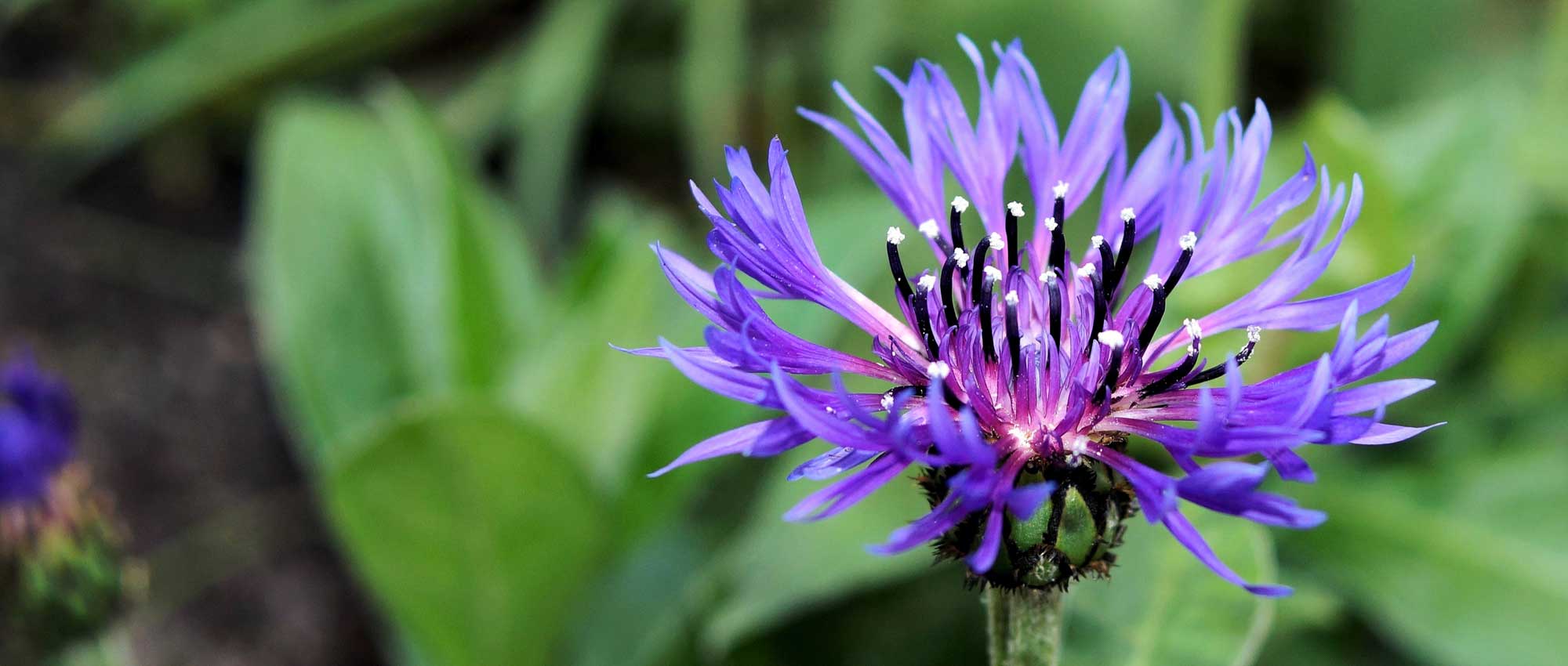
Centaury: sowing, planting and care
Contents
Centaury in a nutshell
- Centaurea is a charming perennial thanks to its fine and delicate flowering, often purple, violet, or blue
- Very easy to grow, it adapts to poor soils and tolerates drought quite well
- Robust and with a wild appearance, it is perfect for naturalistic gardens!
- Some varieties have truly decorative foliage
- The flowers of cornflower and mountain centaurea are edible!
A word from our Expert
Cornflowers are annual or perennial plants that have a lot of charm and integrate very easily into naturalistic gardens! The most well-known are the cornflower, Centaurea cyanus (also called beard cornflower), and the mountain cornflower, Centaurea montana. Flowering often occurs in shades of blue, purple, pink, or mauve… but there are also cornflowers with white, yellow, or even black flowers! The leaves of the cornflower are generally quite ordinary, although there are also varieties with very decorative foliage! This foliage is more or less dissected, and it sometimes takes on a beautiful silvery colour!
Easy to grow, the cornflower is a plant that requires little maintenance. It is the robust perennial par excellence found in our grandmothers’ gardens. The cornflower is content with relatively poor and dry soils, even rocky ones. However, the cultivation methods may vary depending on the varieties: annuals, like the cornflower, are sown in spring directly in place, while perennials (the majority of species) are planted in spring or autumn. Cornflowers are also quite easy to multiply, by sowing or dividing clumps.
Botany
Botanical data
- Latin name Centaurea sp.
- Family Asteraceae
- Common name Centaury, Cornflower
- Flowering between May and September
- Height between 30 cm and 1.50 m
- Sun exposure full sun
- Soil type any type of soil, even poor, but well-drained
- Hardiness -15 to -20 °C
The centauries comprise over 700 species of annual, biennial, or perennial plants, generally herbaceous. Among them, the most well-known are the cornflower, Centaurea cyanus, also known as Bachelor’s Button, and Centaurea montana, the mountain cornflower. They can be annual, like the Cornflower, but are more often perennial, such as Centaurea montana, Centaurea macrocephala, or Centaurea jacea… Biennials are less common in cultivation.
Centauries are primarily European plants, although they can also be found on other continents (Asia, North America…), mainly in the northern hemisphere. Many species are native to the Mediterranean basin. In the wild in France, about thirty species can be found, including the scabious centaury (Centaurea scabiosa) and the jacea centaury (Centaurea jacea). Centauries grow in relatively dry environments, mainly in fallow land, fields, meadows, and rocky areas… As they originate from temperate regions, they are generally quite hardy plants.
Like poppies, cornflowers (Centaurea cyanus) are messicole plants: they have long been present in cereal fields, having adapted to agricultural practices (ploughing…). However, modern agricultural techniques (refined seed sorting, use of weedkillers…) tend to make them disappear from fields; they are becoming increasingly rare.
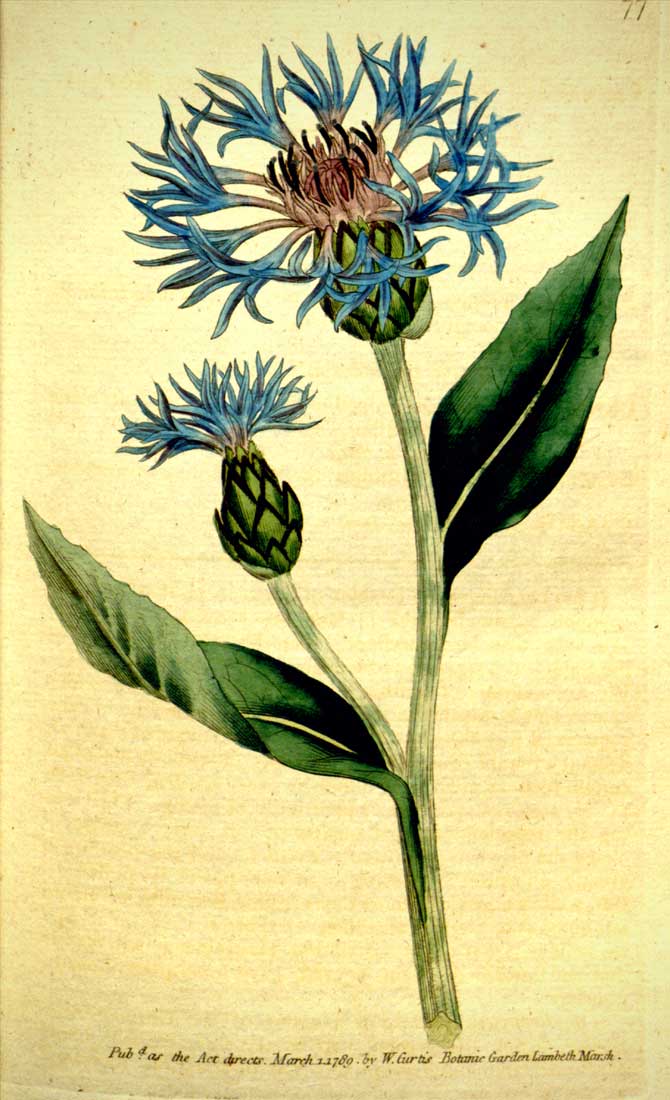
Centaurea montana: botanical illustration
Centauries belong to the large family of Asteraceae (about 33,000 species, making it one of the largest families in the vegetable kingdom!) along with daisies, dandelions, marguerites, asters, echinaceas, sunflowers… A family easily recognisable by their inflorescences in heads: what we take for a flower is actually a multitude of small flowers grouped on a round disc.
Centauries are closely related to thistles (Cirsium), plants sometimes cultivated in gardens that resemble thistles. They are also related to Amberboa (the species Amberboa moschata is also called Centaurea moschata). The name centaury can also be confusing: they should not be confused with Centaurium, known as “little centauries,” which belong to the family of Gentianaceae.
The centaury owes its name to the centaurs, those half-man, half-horse beings, particularly to the centaur Chiron, who is said to have discovered its medicinal properties and used the plant to treat wounds.
Centauries form clumps of leaves from which upright stems emerge. Most species measure between 30 and 80 cm… sometimes up to 1.50 m for the tallest, like Centaurea macrocephala! The tallest varieties will need staking. Centauries are quite slender and tall plants, which adds an elegant, supple, and light aspect. Some species, like Centaurea montana or Centaurea simplicicaulis, are ground-covering plants that form rhizomes. Similarly, the bella centaury can be used as a ground cover.
Depending on the varieties, centauries can bloom from May until August, even September. The cornflower blooms from May to July, while other species are later, blooming in July-August… It is possible to combine different varieties to enjoy a longer flowering period.
Even before the flower blooms, the floral bud is already decorative. It is quite rounded, globose, and consists of imbricate bracts, each bearing a brown and serrated margin (but this can vary depending on the varieties!). The buds then open to reveal very delicate flowers in deep shades. They are borne at the tips of the upright stems.
What we take for a flower is actually an inflorescence, a collection of tiny flowers gathered on the same disc. This inflorescence is called a head. It groups together small tubular flowers (tube-shaped). Those located on the outside, at the periphery, often have very developed petals divided into five lobes, like laciniate. This gives a fine and airy appearance to certain species like Centaurea montana. These large peripheral florets serve to make the flower more visible and attract pollinators to ensure the fertilization of the flowers. They are sterile, while those in the centre are hermaphroditic (possessing both male and female organs).
Each inflorescence is surrounded by scaly bracts, arranged in several rows (like in artichokes!). They can be very decorative, as seen in Centaurea atropurpurea. The bracts are generally dentate, ciliate, but they can also be spiny… Thus, Centaurea calcitrapa bears very long needles on its bracts! The whole set of these bracts forms what is called an involucre. This is often ovoid to globose, quite large but very decorative! The florets seem to be just placed on top.
The heads can have a rather massive, rounded, and compact appearance, as in Centaurea atropurpurea, but most of the time they are very light and airy… The flowers form large pom-poms in Centaurea moschata (also called Amberboa moschata)!
We appreciate centauries for their deep shades and the nuances they can offer. Their flowers are well-known in shades of purple, mauve, blue, or pink… But they can also be yellow or white… even black in the case of the centaury ‘Black Sprite’! Centaurea macrocephala bears bright yellow flowers, very luminous! Let yourself be surprised by these centauries with less common shades. The flowers are sometimes bicoloured, with the central florets (those of the disc) lighter or darker than those located on the outside… the flowers then reveal very beautiful nuances!
With their long stems and colourful flowering, centauries are ideal flowers for making bouquets! They have a fairly good vase life. They are also excellent nectar-producing plants. The flowers, which produce nectar, are appreciated by butterflies and bees.

The flowering of centauries! Centaurea cyanus (Cornflower), Centaurea ruthenica (photo C. T. Johansson), Centaurea ‘Black Sprite’ and Centaurea atropurpurea
The centaury has a foliage that is often bushy and quite dense. Its leaves are alternate and can be simple or divided, cut. Often, the basal leaves are deeply cut, while the higher up the stem you go, the more they become entire, undivided. The leaves are very cut in Centaurea scabiosa and Centaurea cineraria. The lamina is sometimes pubescent, giving the plant a cottony or woolly, quite soft appearance!
The leaves measure 5 or 6 cm long in Centaurea montana, but they are often longer in other species, reaching between 10 and 20 cm in length.
Although the leaves are most often green, it is quite common for the foliage to be bluish. Sometimes, the centaury bears superb silvery foliage, as in Centaurea pulcherrima or Centaurea cineraria.

The foliage of centauries can take quite varied forms. Centaurea montana ‘Sulphurea’, Centaurea scabiosa (photo Armand Turpel), Centaurea ragusina and Centaurea bella
The fruit of the centaury is an achene topped by an egret. It flies away with the wind, allowing the plant to disperse.
Read also
Scabiosa: sowing, planting and growingThe main varieties
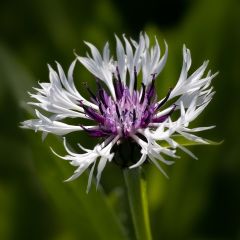
Centaurea montana Purple Heart
- Flowering time May to July
- Height at maturity 60 cm
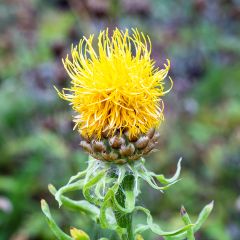
Centaurea macrocephala
- Flowering time August to October
- Height at maturity 1,20 m
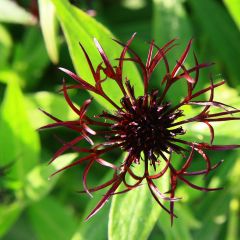
Centaurea montana Black Sprite
- Flowering time June to August
- Height at maturity 40 cm
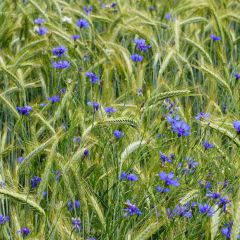
Wild Cornflower Seeds - Centaurea cyanus
- Flowering time July to September
- Height at maturity 80 cm
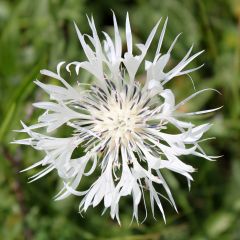
Centaurea montana Alba
- Flowering time May to July
- Height at maturity 60 cm
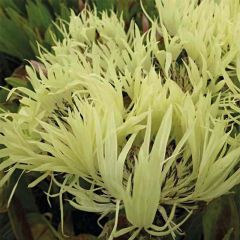
Centaurea montana Sulphurea
- Flowering time June to August
- Height at maturity 40 cm
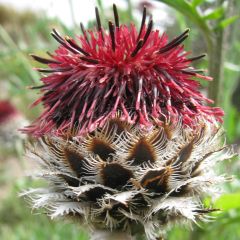
Centaurea atropurpurea
- Flowering time June to August
- Height at maturity 60 cm
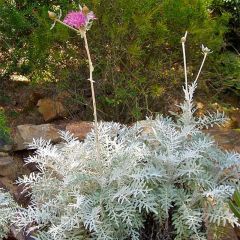
Centaurea pulcherrima
- Flowering time June to August
- Height at maturity 60 cm
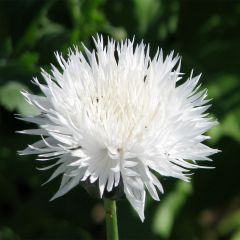
Cornflower The Bride Seeds - Centaurea moschata
- Flowering time August to October
- Height at maturity 55 cm
Discover other Centaurea
View all →Available in 2 sizes
Available in 2 sizes
Available in 0 sizes
Available in 2 sizes
Available in 1 sizes
Available in 1 sizes
Available in 1 sizes
Available in 1 sizes
Available in 1 sizes
Available in 2 sizes
Young plantation
Where to plant?
Centaureas are low-maintenance plants that thrive in almost any location. You can plant them in relatively poor and dry soil. Plant centaureas in full sun if possible! Perennial species, such as Centaurea montana, can also tolerate partial shade, but sunny exposures are preferred. Centaureas do not like acidic substrates. They prefer alkaline soil.
Some species enjoy rather dry and stony soils, making them suitable for rock gardens. This is the case for Centaurea ragusina or Centaurea bella. Centaureas generally tolerate drought quite well and appreciate sunny locations: you can place them in a rock garden alongside sedums, phlox, or saxifrages.
However, some varieties, such as Centaurea montana or Centaurea macrocephala, prefer cooler soils. Plant them in borders and apply mulch around their base. We recommend planting centaureas in well-draining soil to limit the risk of fungal diseases (notably powdery mildew).
Centaureas, especially those with a creeping habit, can also be used to green up a slope. They will beautifully cover it with their dense foliage punctuated by colourful flowers, while requiring little maintenance. These are plants that are content with little.
When to plant?
Plant perennial centaureas in spring (around April) or in autumn (September-October).
Annual species, such as cornflower, can be sown directly in place in spring (April-May). It is also possible to sow them in autumn to enjoy earlier flowering the following spring.
Intervene outside of frost periods.
How to plant perennial centaureas?
Although this can vary depending on the centaurea being cultivated, we generally recommend maintaining a distance of 30 to 40 cm between each plant. Some species have a creeping habit and will tend to spread over time.
- Soak the root ball in a basin of water to moisten it and facilitate recovery.
- Dig a planting hole. If your soil tends to retain water, do not hesitate to add draining materials: coarse sand, pumice…
- Place the centaurea in the planting hole.
- Replace the soil around it and firm it down with the palm of your hand.
- Water generously.
Centaurea can be planted in the ground or in pots. If you choose to grow it in a pot, place gravel or clay balls at the bottom of the pot to improve drainage.
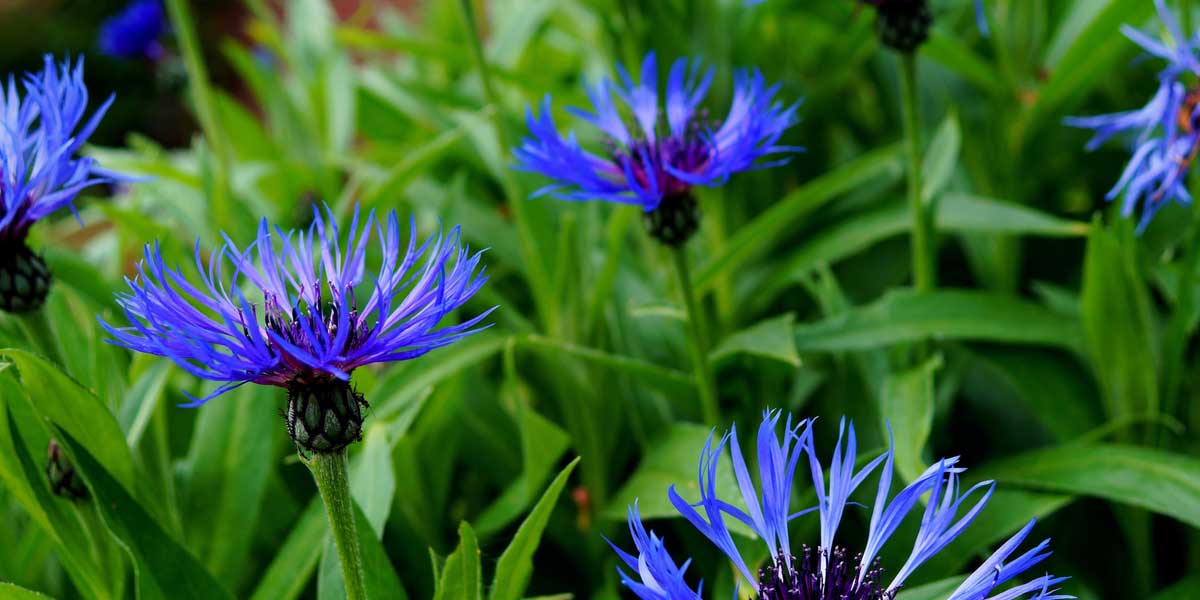
How to sow cornflower, Centaurea cyanus?
Cornflowers, along with other annual centaureas and beard centaureas, can be sown directly in the ground in spring.
- Prepare the soil by refining it. Remove large stones, roots, and break up clumps of soil. Level with a rake to achieve a flat and fine surface.
- Sow by spreading the seeds over the surface.
- Lightly cover with substrate.
- Water gently.
- Continue to water regularly until the seeds germinate.
- Then you can thin out (15 to 25 cm apart between each plant) and keep only the most vigorous young plants.
Maintenance
Relatively drought-resistant, centauries generally do very well without watering. However, you can install a mulch at their base to retain soil moisture. Some species, such as mountain centaury, still appreciate a degree of freshness, while others are much better suited to rocky and dry soils. Similarly, if you are growing them in pots, it is advisable to water them a bit during the summer, in dry weather.
Centauries are low-maintenance plants: it is not really necessary to provide them with fertiliser. They are content with fairly poor soils.
Young plants of cornflowers benefit from being pinched to encourage them to branch out.
We also recommend removing the flowers when they are faded. Likewise, when the plant has finished flowering, you can cut it back. This will encourage the emergence of a second flowering.
We advise dividing your perennial centauries approximately every four years. In addition to multiplying them, this will help to rejuvenate the clumps.
Centauries have long, relatively flexible stems; thus, the taller species may require staking.
As for diseases, centaury is particularly susceptible to powdery mildew, which mainly affects Centaurea montana and Centaurea macrocephala. The foliage then becomes unsightly, covered with a white fluff. The best way to combat this disease is to cut the plant back in early summer. It should flower again. Centaury can also be affected by rust, another fungal disease. The foliage then bears reddish-brown spots. We recommend treating with a sulphur-based solution.
Multiplication
We recommend propagating annual centaurées by sowing, and perennial species rather by clump division. It is also possible to propagate Centaurea montana by root cuttings. This operation is carried out in winter, outside of frost periods.
Sowing
Sowing in pots (perennial centaurées):
- Fill a pot with special sowing compost and lightly firm it down.
- Spread the seeds on the surface.
- Cover with a layer of substrate (about 1 cm thick).
- Water.
- Place the pot in a sheltered location, ideally at a temperature of around 18 – 20 °C.
- Keep the compost slightly moist until germination.
Sowing in open ground (annual centaurées):
- Choose a sunny location.
- Prepare the ground: remove weeds, stones, and larger roots, and break up clumps of soil. Level the soil with a rake to create a fine, flat seedbed.
- Sow the seeds.
- Cover them with a layer of compost.
- Water gently.
- Continue to water regularly in the weeks following sowing.
- You can then thin out to keep one plant every 15 to 20 cm (sometimes more… it also depends on the chosen variety!).
→ Learn more about sowing cornflower in our tutorial!
Tiller Division
Perennial centaurées are easily propagated by division. We recommend doing this approximately every three years, in spring or autumn. This regenerates the clumps, making them more vigorous.
- Choose a large, well-established clump that has been present for several years.
- Dig around it fairly widely using a fork. Be careful not to damage the roots.
- Remove the clump, then if necessary, remove the soil that remains attached to the roots.
- Divide it into several pieces.
- Prepare the ground to accommodate the new plants.
- Replant them, then water generously.
- Continue to water in the following weeks to ensure good establishment.
Association
Centaurea, and even more so the cornflower, is the ideal plant for a naturalistic garden! Scatter a few clumps among many grasses, alongside other light flowers: with poppies, cosmos, thistles, scabious, or sanguisorba… Also enjoy the majestic inflorescences of teasel, Dipsacus fullonum. You can take the opportunity to create a kind of flowering meadow, with tall grasses and wildflowers. Especially since centaureas can naturalise!
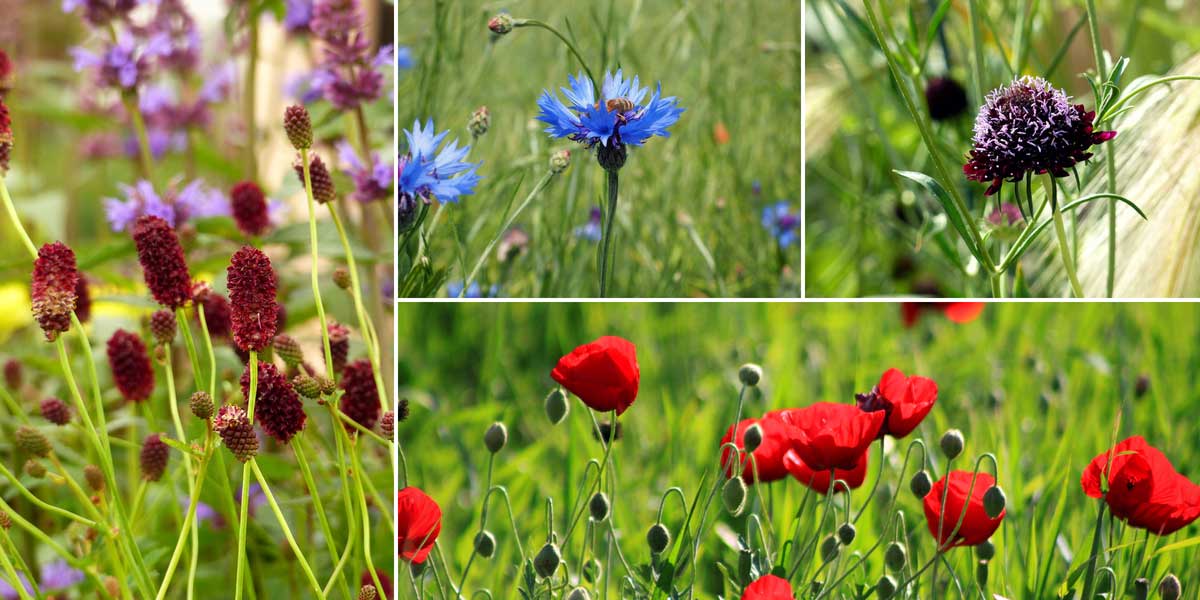
The cornflower easily finds its place in a naturalistic garden! Sanguisorba ‘Red Thunder’, cornflowers, Scabiosa atropurpurea ‘Chile Black’, and poppies
You can also plant centaureas in a border, with other blue, white, or mauve summer flowers: gypsophila, foxgloves, poppies, yarrow, sages, cosmos… You can scatter cornflower seeds in a border to add a few touches of colour. You can also create a delicate and romantic scene by placing them at the foot of a rose bush. The yellow flowers of Centaurea macrocephala easily pair with other bright summer flowers: rudbeckias, dahlias, Salvia coccinea…
For an original and timeless border, you can combine silver-leaved centaureas (Centaurea pulcherrima, Centaurea ragusina…) with other plants that have leaves in similar tones: Stachys byzantina, Salvia argentea, Senecio cineraria, Artemisia schmidtiana… Add a few graphic plants, including Eryngium, grasses, or sanguisorba.
Centaureas also find their place in the vegetable garden or in a cottage garden… Especially since the flowers are edible and medicinal! Plant the cornflower or mountain centaurea with sages, borage, mallow, and various herbs… You can easily harvest a few plants to make herbal teas or decorate dishes (salads, desserts…)!
Because they withstand drought well and accept poor, stony soils, some centaureas adapt particularly well to rockeries. Create a slightly raised area, in full sun, where you will place large stones, a draining substrate, and where you will plant ground-cover or cushion plants. Plant centaureas there, for example Centaurea ragusina or Centaurea bella, alongside saxifrages, sedums, houseleeks, grasses, yarrow, phlox…
Don’t hesitate to plant centaureas in pots or window boxes, to enhance a terrace, balcony, or windowsill. You can place them alongside campanulas, scaevolas, coreopsis, lobelias, or carex.
Did you know?
- A medicinal and edible plant!
The flowers of the cornflower are edible. Those of the blue cornflower, or mountain centaury, are particularly used. Feel free to use them to decorate dishes (salads, desserts, etc.)! They can also be used in herbal tea… The dried flowers of the blue cornflower retain their beautiful blue hue!
The blue cornflower has anti-inflammatory, diuretic, and digestive effects, and it is often used to soothe eye irritations. It is mainly used in the form of floral water.
Useful resources
- Discover our range of centauries!
- Our centaury seeds!
- An inspiration for pairing centauries: naturalist garden atmosphere!
- To help you with your choice, read our article: centauries, Blue Cornflowers: how to choose them well
- Everything you need to know about drying centaury flowers in Leïla’s tutorial!
Frequently asked questions
-
The leaves of my centaury are covered in a white fluff. What should I do?
It is affected by powdery mildew, a fungal disease that quite frequently affects centauries, particularly Centaurea montana. This disease often appears at the beginning of summer. It is encouraged by shade and humidity, which is why it is important to plant centauries in sunny, well-drained soil. When you notice the disease, we advise cutting back the foliage completely (at the beginning of summer). There is a good chance that the plant will bloom again afterwards.
- Subscribe!
- Contents
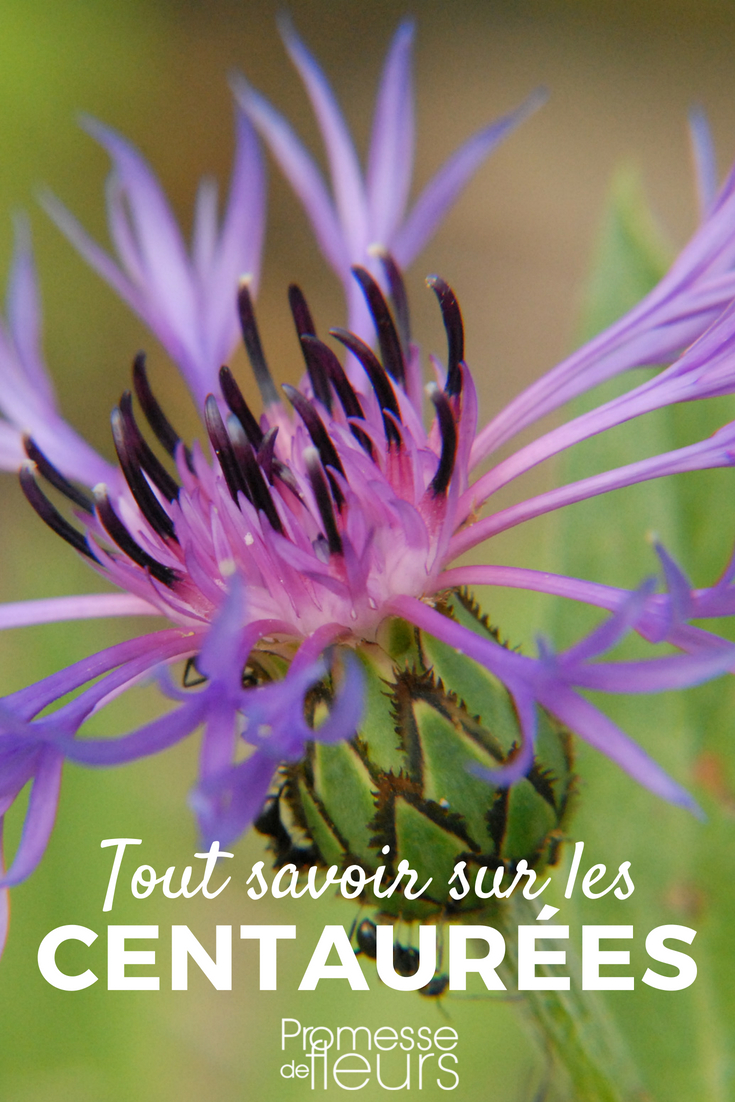
































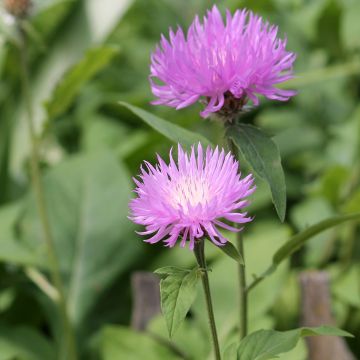
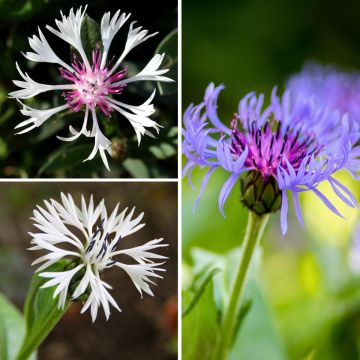

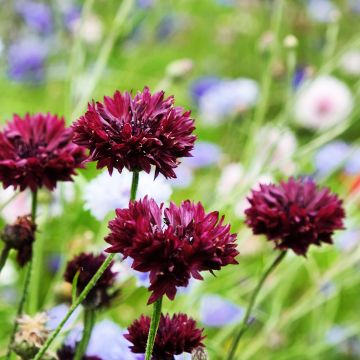
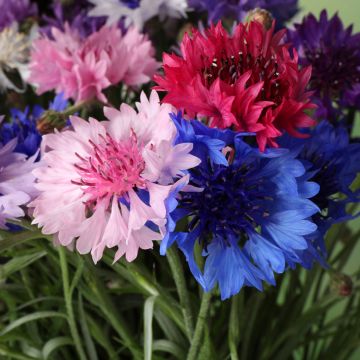
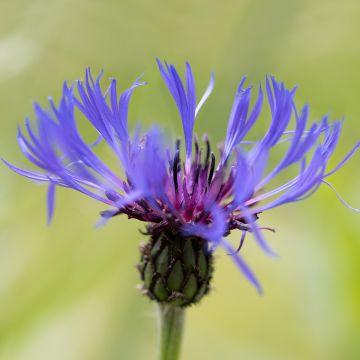
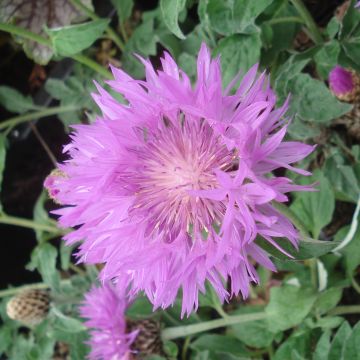
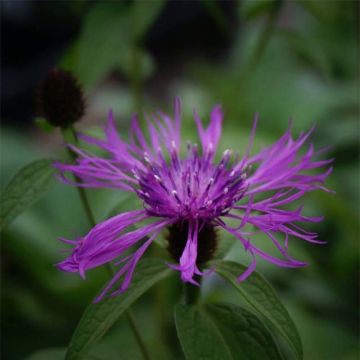
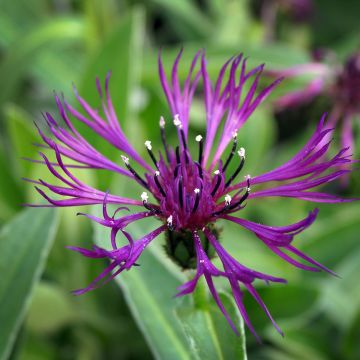
Comments